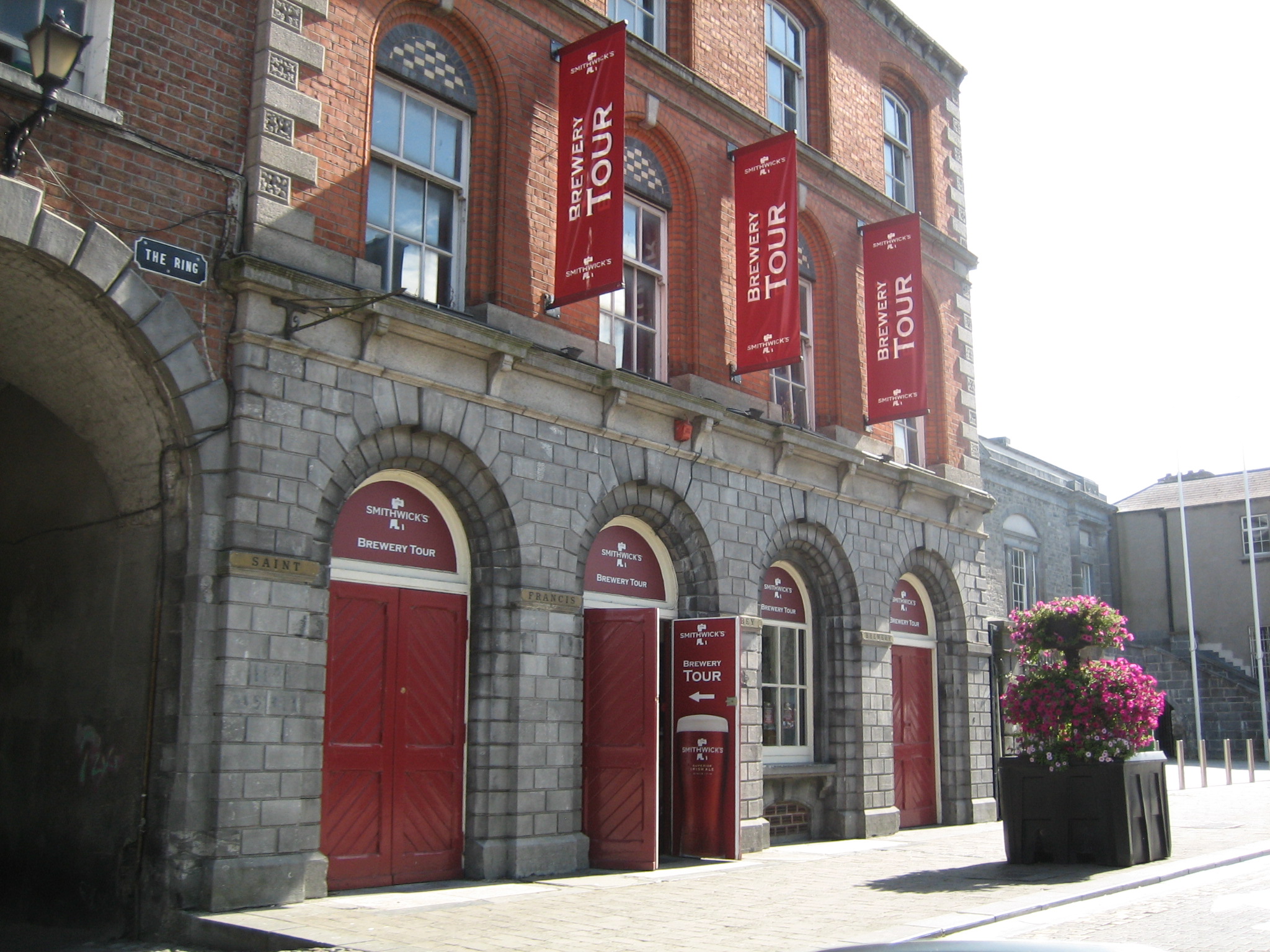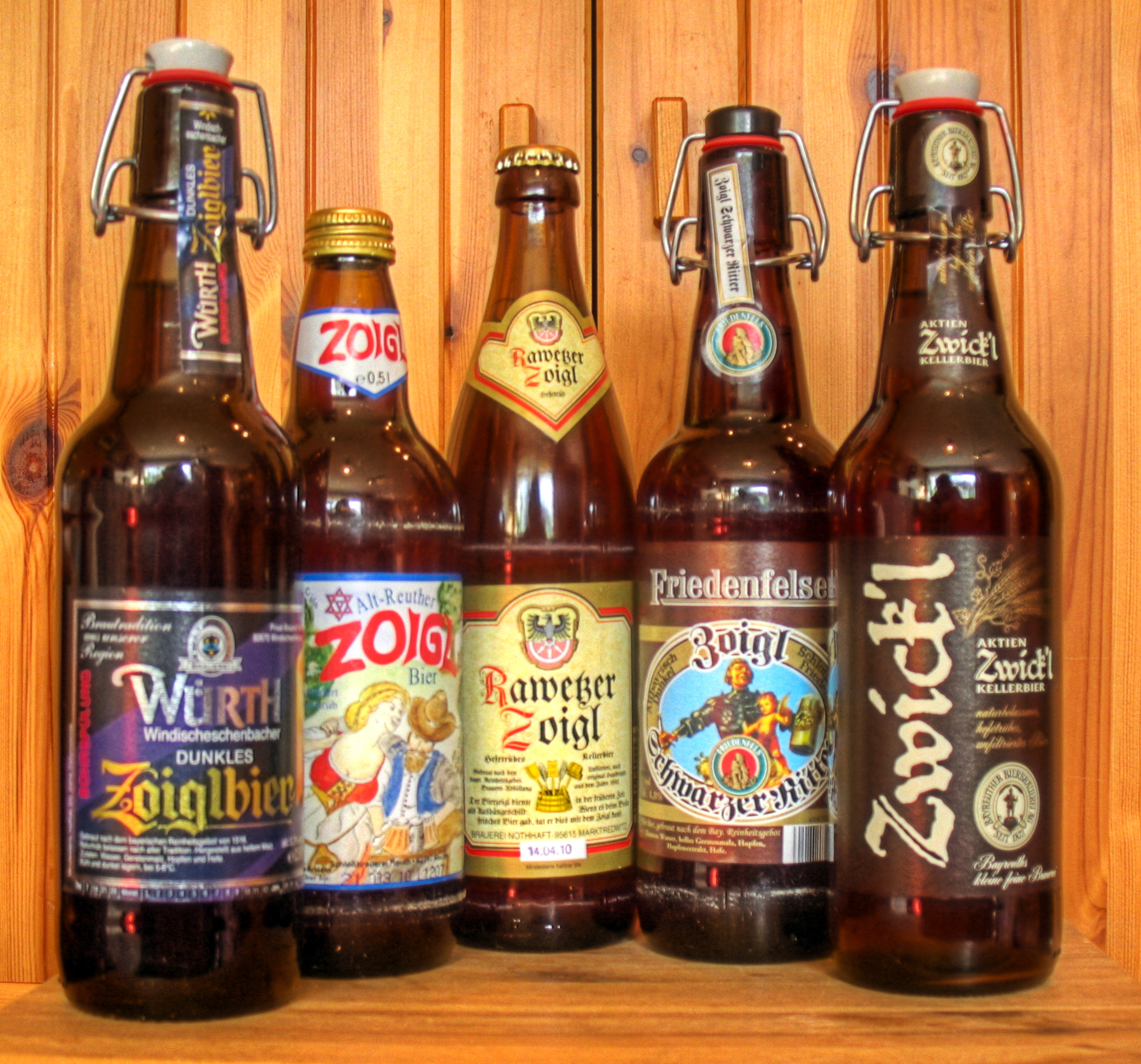|
Appalachian Brewing Company
The Appalachian Brewing Company, commonly known as ABC, is an American brewery in Harrisburg, Pennsylvania. It was founded in January 1997. Appalachian also operates pubs in Gettysburg, Lititz, Mechanicsburg and Shippensburg. The logo features the Rockville Bridge, which crosses the Susquehanna river just north of Harrisburg. Craft beer Flagship brews * Aero-Head Bock * Trail Blaze Maple Brown Ale * Chocolate Avenue Stout * Outta Focus Double IPA * Water Gap Wheat Ale * Mountain Lager Dortmunder Export * Hoppy Trails India Pale Ale * Jolly Scot Scottish Style Ale Seasonal specialty brews * Zoigl Star Lager Unfiltered Lager * Celtic Knot Irish Red Ale * Anniversary Maibock * Mad Cameron Belgian Wit * Hinterland Hefe Weizen * Volks Weizenbock * Kipona Fest Marzen * Fresh Hop Pale Ale * Rutty Buck Pumpkin Ale * Batch No. 666 Halloween Beer * Grinnin' Grizzly Holiday Spiced Ale * Pennypacker Porter Craft soda Craft sodas include: * Appalachian Root Beer * Diet Appa ... [...More Info...] [...Related Items...] OR: [Wikipedia] [Google] [Baidu] |
Harrisburg, Pennsylvania
Harrisburg is the capital city of the Commonwealth of Pennsylvania, United States, and the county seat of Dauphin County. With a population of 50,135 as of the 2021 census, Harrisburg is the 9th largest city and 15th largest municipality in Pennsylvania. Harrisburg is situated on the east bank of the Susquehanna River. It is the larger principal city of the Harrisburg–Carlisle metropolitan statistical area, also known as the Susquehanna Valley, which had a population of 591,712 as of 2020, making it the fourth most populous metropolitan area in Pennsylvania after the Philadelphia, Pittsburgh, and Lehigh Valley metropolitan areas. Harrisburg played a role in American history during the Westward Migration, the American Civil War, and the Industrial Revolution. During part of the 19th century, the building of the Pennsylvania Canal and later the Pennsylvania Railroad allowed Harrisburg to develop into one of the most industrialized cities in the Northeastern United States. ... [...More Info...] [...Related Items...] OR: [Wikipedia] [Google] [Baidu] |
Pale Ale
Pale ale is a golden to amber coloured beer style brewed with pale malt. The term first appeared around 1703 for beers made from malts dried with high-carbon coke, which resulted in a lighter colour than other beers popular at that time. Different brewing practices and hop quantities have resulted in a range of tastes and strengths within the pale ale family. History Coke had been first used for dry roasting malt in 1642, but it was not until around 1703 that the term ''pale ale'' was first applied to beers made from such malt. By 1784, advertisements appeared in the ''Calcutta Gazette'' for "light and excellent" pale ale. By 1830, the expressions ''bitter'' and ''pale ale'' were synonymous. Breweries tended to designate beers as "pale ales", though customers would commonly refer to the same beers as "bitters". It is thought that customers used the term ''bitter'' to differentiate these pale ales from other less noticeably hopped beers such as porters and milds. By the m ... [...More Info...] [...Related Items...] OR: [Wikipedia] [Google] [Baidu] |
Weizenbock
Wheat beer is a top-fermented beer which is brewed with a large proportion of wheat relative to the amount of malted barley. The two main varieties are German ''Weizenbier'' and Belgian ''witbier''; other types include Lambic (made with wild yeast), Berliner Weisse (a cloudy, sour beer), and Gose (a sour, salty beer). Varieties Weißbier (German – "white beer") uses at least 50% wheat to barley malt to make a light coloured top-fermenting beer. Witbier (Dutch – "white beer") uses flavorings such as coriander and orange peel. Belgian white beers are often made with raw unmalted wheat. German Weißbier and Belgian witbier are termed "white beers" because "wheat" has the same etymological root as "white" in most West Germanic languages (including English). Other wheat beer styles, such as Berliner Weiße, Gose, and Lambic, are made with a significant proportion of wheat. Weizenbier Weizenbier or Hefeweizen, in the southern parts of Bavaria usually called Weißbier (liter ... [...More Info...] [...Related Items...] OR: [Wikipedia] [Google] [Baidu] |
Hefeweizen
Wheat beer is a top-fermented beer which is brewed with a large proportion of wheat relative to the amount of malted barley. The two main varieties are German ''Weizenbier'' and Belgian ''witbier''; other types include Lambic (made with wild yeast), Berliner Weisse (a cloudy, sour beer), and Gose (a sour, salty beer). Varieties Weißbier (German – "white beer") uses at least 50% wheat to barley malt to make a light coloured top-fermenting beer. Witbier (Dutch – "white beer") uses flavorings such as coriander and orange peel. Belgian white beers are often made with raw unmalted wheat. German Weißbier and Belgian witbier are termed "white beers" because "wheat" has the same etymological root as "white" in most West Germanic languages (including English). Other wheat beer styles, such as Berliner Weiße, Gose, and Lambic, are made with a significant proportion of wheat. Weizenbier Weizenbier or Hefeweizen, in the southern parts of Bavaria usually called Weißbier (liter ... [...More Info...] [...Related Items...] OR: [Wikipedia] [Google] [Baidu] |
Belgian Wit
Wheat beer is a top-fermented beer which is brewed with a large proportion of wheat relative to the amount of malted barley. The two main varieties are German ''Weizenbier'' and Belgian ''witbier''; other types include Lambic (made with wild yeast), Berliner Weisse (a cloudy, sour beer), and Gose (a sour, salty beer). Varieties Weißbier (German – "white beer") uses at least 50% wheat to barley malt to make a light coloured top-fermenting beer. Witbier (Dutch – "white beer") uses flavorings such as coriander and orange peel. Belgian white beers are often made with raw unmalted wheat. German Weißbier and Belgian witbier are termed "white beers" because "wheat" has the same etymological root as "white" in most West Germanic languages (including English). Other wheat beer styles, such as Berliner Weiße, Gose, and Lambic, are made with a significant proportion of wheat. Weizenbier Weizenbier or Hefeweizen, in the southern parts of Bavaria usually called Weißbier (liter ... [...More Info...] [...Related Items...] OR: [Wikipedia] [Google] [Baidu] |
Irish Red Ale
Irish red ale (), also known as red ale or Irish ale, is a style of pale ale that is brewed using a moderate amount of kilned malts and roasted barley, giving the beer its red colour. Its strength typically ranges from 3.8% to 4.8% alcohol by volume, although some craft varieties can be as high as 6%. In the United States, "Irish red" is sometimes used describe a darker amber ale or a "red" beer that is a lager with caramel colouring. However, these beers are not Irish red ales. History Irish red ale originated in the city of Kilkenny in the early 1700s. Although ale had been brewed in the city at St. Francis Abbey since the 14th century, the origins of Irish red ale date to a brewery established by Daniel Sullivan in 1702. A merchant class of predominantly Catholic families were involved in brewing, distilling, malting and milling in the city in the 18th century, namely Archdeakin, Brennan, Cormick, Connell, Dullard, Hyland, Kinchella, McCreary, Meighan, Smithwick, Sullivan and ... [...More Info...] [...Related Items...] OR: [Wikipedia] [Google] [Baidu] |
Zoigl
Zoigl is a type of German beer brewed in the Oberpfalz, eastern Bavaria, between Franconia and the Czech Republic. The name is believed to be derived from a Windischeschenbacher dialect pronunciation of the German word ''zeigen'' or ''Zeichen'' meaning "sign", the symbol used to advertise that the beer is available at an establishment. Its two component triangles represent the joining of six beer ingredients: the first triangle denoting water, fire and air; the second and inverted triangle denoting malted barley, hops, water. History The first documented example of the word "zeigl" occurs in a 1508 document at Neustadt an der Waldnaab, having derived from the German "Zeichen" meaning sign, or "zeigen" meaning show. It was pronounced "zeigel" in the Oberpfalz region. Today the word "Zoigl" is still in use and has given its name to this style of beer production. Zoigl has been brewed for centuries in communal breweries, owned either by the town or by an association of homebrewers. ... [...More Info...] [...Related Items...] OR: [Wikipedia] [Google] [Baidu] |





